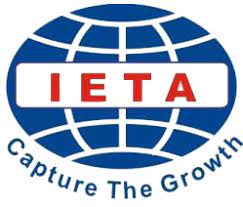WRITING ANXIETY AND WRITING STRATEGIES USED BY ENGLISH DEPARTMENT STUDENTS OF UNIVERSITAS NEGERI PADANG
 ), Mukhaiyar Mukhaiyar(2), Delvi Wahyuni(3),
), Mukhaiyar Mukhaiyar(2), Delvi Wahyuni(3), (1) Universitas Negeri Padang
(2) Universitas Negeri Padang
(3) Universitas Negeri Padang
 Corresponding Author
Corresponding Author
Copyright (c) 2018 Lingua Didaktika: Jurnal Bahasa dan Pembelajaran Bahasa
DOI : https://doi.org/10.24036/ld.v12i1.8766
Full Text:
 Language : en
Language : en
Abstract
Key words/phrases: levels of writing anxiety, types of writing anxiety, writing strategies
Abstrak
Artikel ini bertujuan untuk menemukan level dan tipe kecemasan dalam menulis dan strategi menulis yang digunakan oleh mahasiswa tahun ketiga Jurusan Bahasa Inggris di Universitas Negeri Padang. 41 siswa dipilih sebagai responden dari penelitian ini. Penelitian ini merupakan penelitian deskriptif kuantitatif. Data didapakan dari membagikan 2 kuesioner. Kuesioner pertama yaitu SLWAI (Second Language Writing Anxiety Inventory) dari Cheng (2002) digunakan untuk mengetahui level dan tipe kecemasan responden. Kuisioner kedua yaitu Writing Strategy Scale dari Raoofi dkk (2017) digunakan untuk mengetahui strategi menulis yang digunakan responden. Penelitian ini menemukan bahwa responden mengalami kecemasan menulis dalam tingkat yang menengah, dengan tipe kognitif sebagai tipe yang mendominasi. Dari penelitian ini juga diketahui bahwa responden berada di level yang tinggi dalam penggunaan strategi menulis. Strategi yang sering digunakan yaitu strategi afektif dan metakognitif.
Kata Kunci/frase: level kecemasan dalam menulis, tipe kecemasan dalam menulis, strategi menulis
Keywords
References
Aljafen, B. S (2013). Writing anxiety among EFL Saudi students in Science Colleges and Departments at a Saudi University. Theses and Dissertations (All). 1085.
Anggraini, H. W. (2016). Gender-based differences in levels of writing anxiety of undergraduate students of English Study Program . South Sumatera: Sriwijaya University.
Asmari, A.R. (2013). Investigation of writing strategies, writing apprehension, and writing achievement among Saudi EFL-Major Students. International Education Studies; Vol. 6, No. 11; 2013. Published by Canadian Center of Science and Education
Azizi, M. N. A. & Estahbanati, N. (2017). Meta-cognitive awareness of writing strategy use among Iranian EFL learners and its impact on their writing performance. International Journal of English Language & Translation Studies. 5(1), 42-51.
Atay, D & Kurt, G (2006). Prospective teacher and L2 writing anxiety. Asian EFL Journal, Vol.8 No.4
Cheng, Y. S. (2002). Factors associated with foreign language writing anxiety. Foreign Language Annuals, 35(5), 647-56
Cheng, Y.-S. (2004). A measure of second language writing anxiety: Scale development and preliminary validation. Journal of Second Language Writing. Vol. 13. Page. 313-335.
Dacwag, C.W. (2014). L2 Writing anxiety of the students of the Maritime Academy of Asia & the Pacific. International Journal of Art and Sciences. University publications.net
Hassan, B. A. (2001). The relationship of writing apprehension and self-esteem to the writing quality and quantity of EFL University students. Mansoura Faculty of Education Journal. Retrieved on September 15 2017 from http://files.eric.ed.gov/fulltext/ED459671.pdf
Horwitz,E K. Michael B. Horwitz, Joann Cope (1986). Foreign language classroom anxiety. The Modern Language Journal. Vol.70 No.2. Blackwell Publishing
Latif, NA. (2015). A study on English language anxiety among adult learners in Universiti Teknologi Malaysia (UTM). Procedia - Social and Behavioral Sciences 208 ( 2015 ) 223 – 232
Rahim S.A; Jaganathan, P; Mahadi, T. S. T. (2016). An investigation on the effects of writing anxiety on readiness of writing among low proficiency undergraduates. International Journal of Language Education and Applied Linguistics (IJLEAL). Copyright © Penerbit Universiti Malaysia Pahang
Raoofi S, Anvar Miri, Jalal Gharibi, Bahram Malaki. (2017). Assesing and validating a writing strategy scale for undergraduate students. Journal of Language Teaching and Research, Vol. 8. No. 3.
Rezaei, M & Jafari, M. (2014). Investigating the levels, types, and causes of writing anxiety among Iranian EFL students: A mixed method design. Procedia- Social and behavioral Sciences Vol. 98 Page 1545-1554.
Sarab M.R.A, Farsan M.A. (2016) The relationship between writing strategies and personality types of graduate Iranian EFL learners. Applied Research on English Language.
Tuppang, S. K. (2014). Investigating students’ writing anxiety: A study at English teacher education of Satya Wacana Christian University”. Bachelor thesis. Salatiga: Satya Wacana Christian University.
Younas M, Ahmad S, Hafsa A, Muntaha S, Mariyam H, Maria F. (2014). Exploring the causes of writing anxiety: A case of B.S English Students. Language in India Journal Vol. 14 No. 08.
Zhang, H. (2011). A study on ESL writing anxiety among Chinese English majors- causes, effects and coping strategies for ESL Writing Anxiety. Sweden: Kristianstad University.
 Article Metrics
Article Metrics
 Abstract Views : 2768 times
Abstract Views : 2768 times
 PDF Downloaded : 1224 times
PDF Downloaded : 1224 times
Refbacks
- There are currently no refbacks.
Copyright (c) 2018 Lingua Didaktika: Jurnal Bahasa dan Pembelajaran Bahasa

This work is licensed under a Creative Commons Attribution-NonCommercial 4.0 International License.









